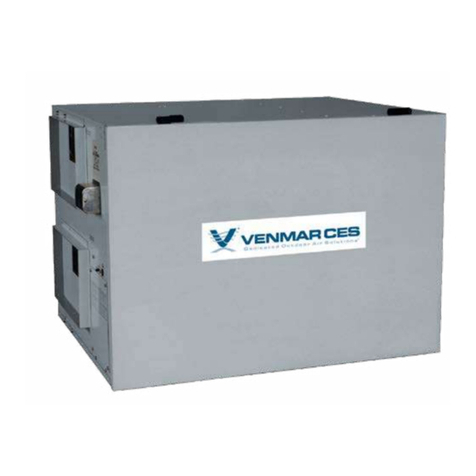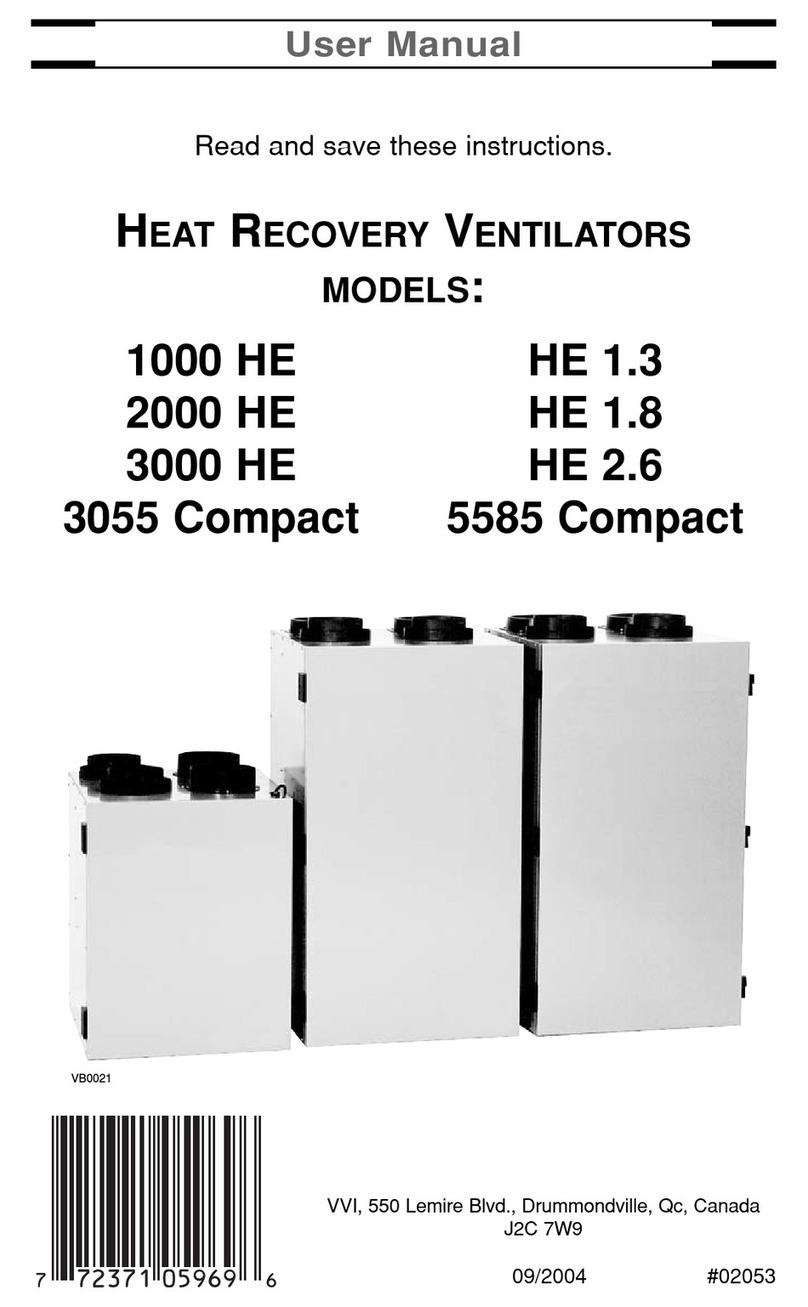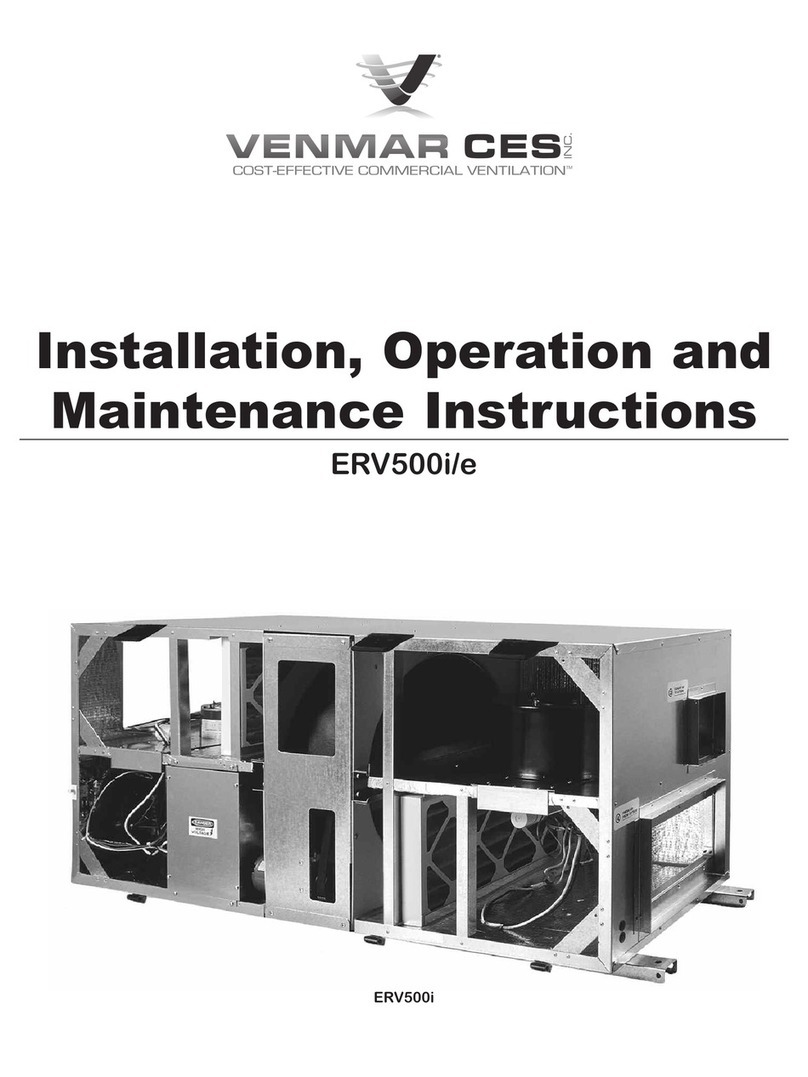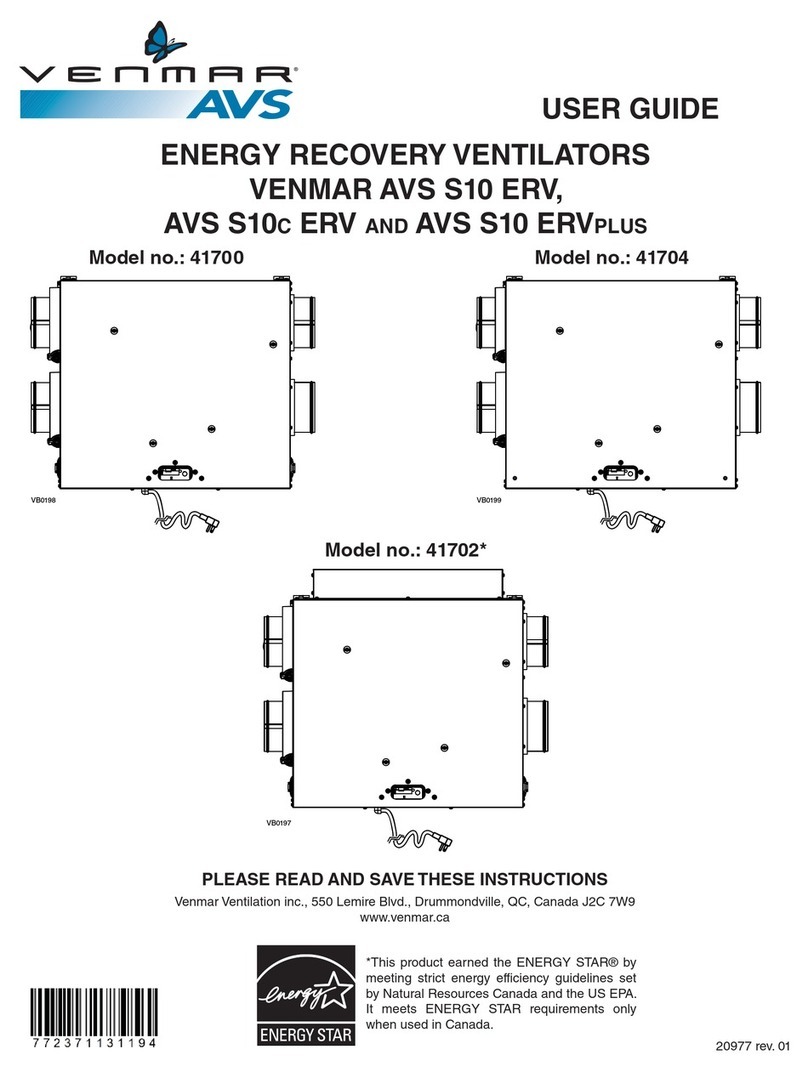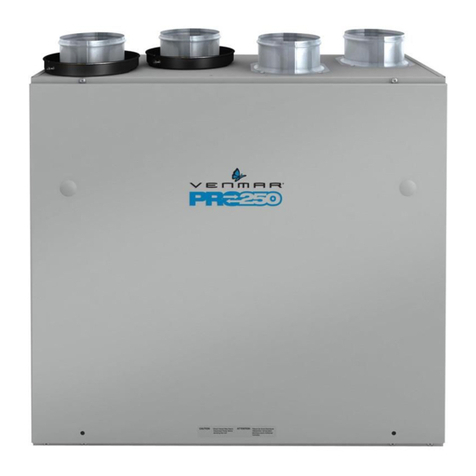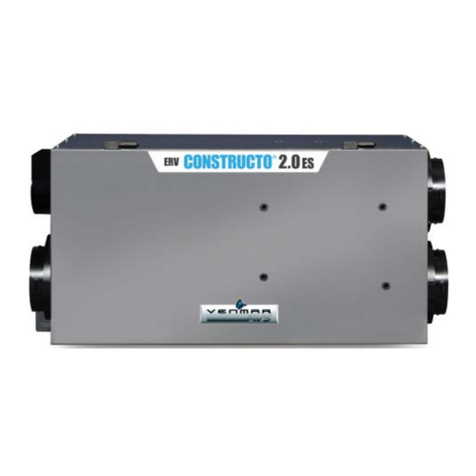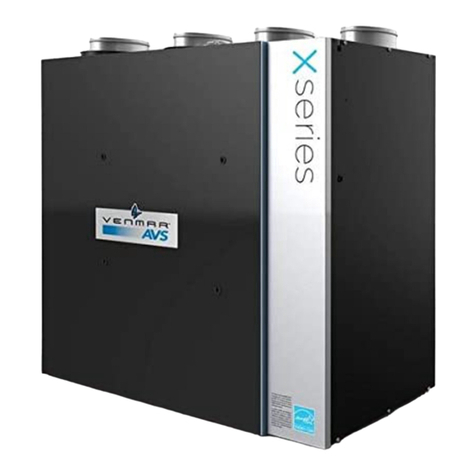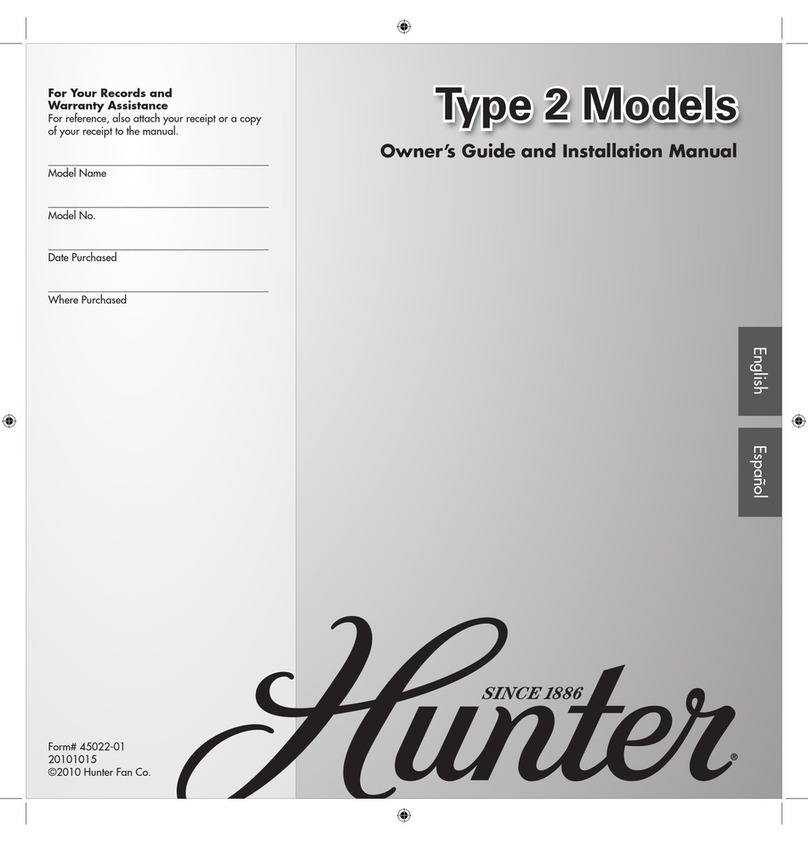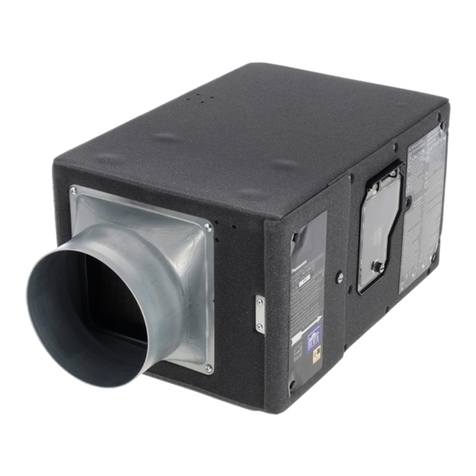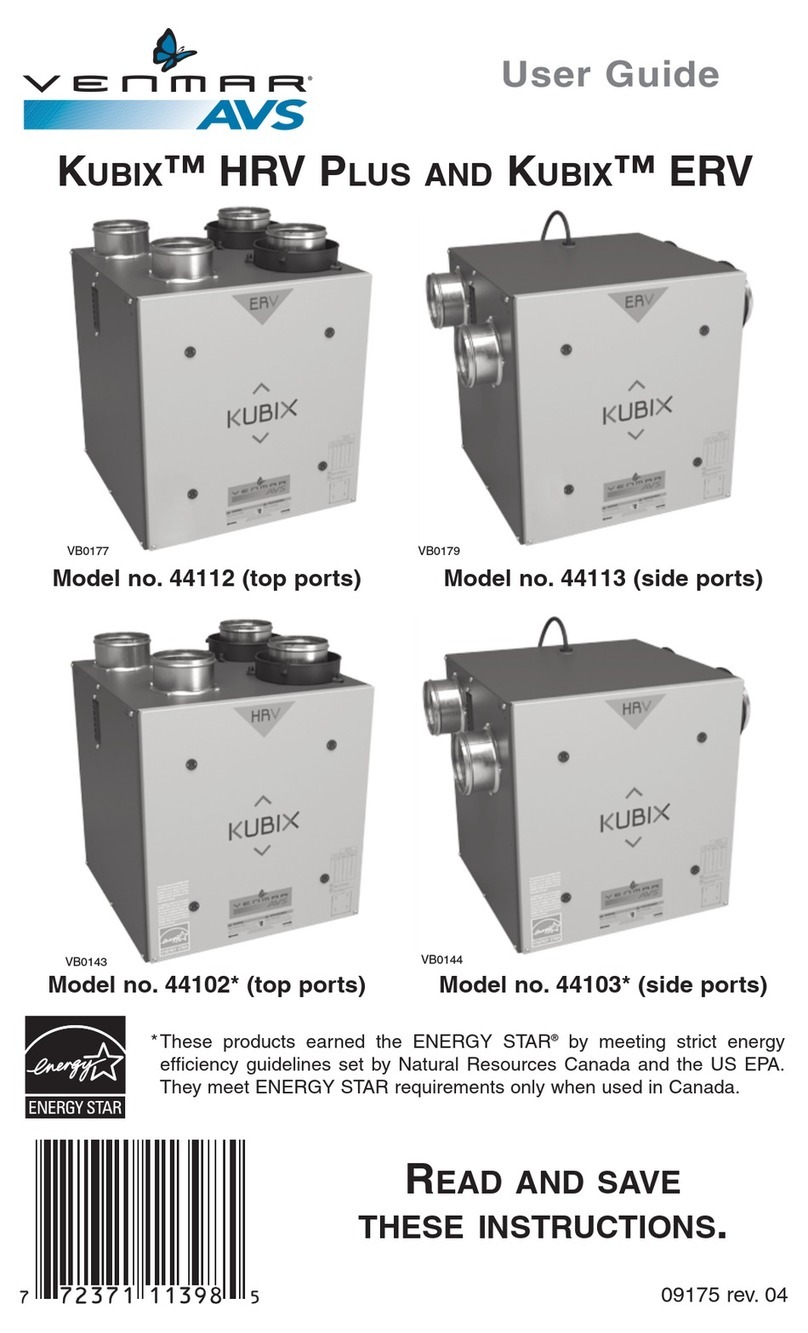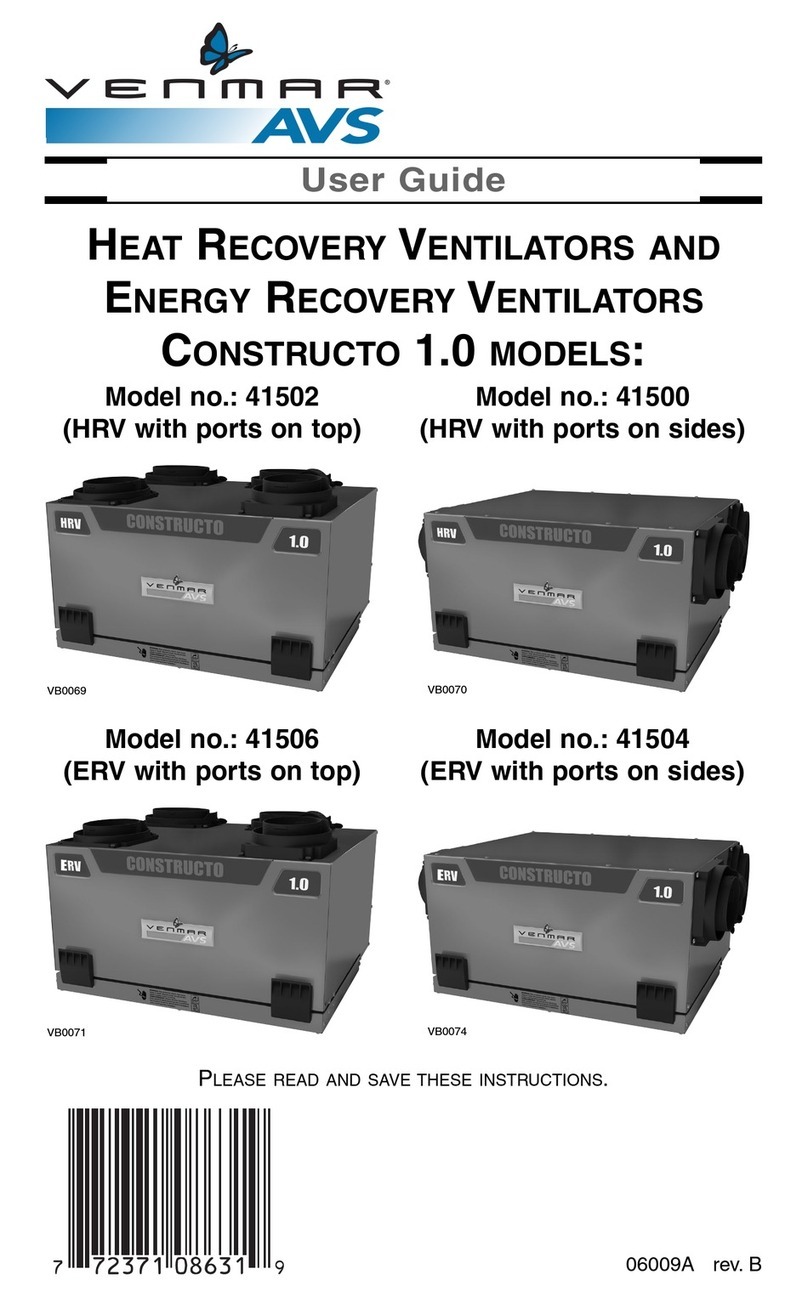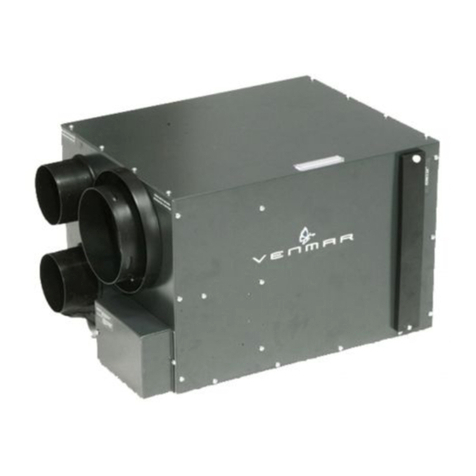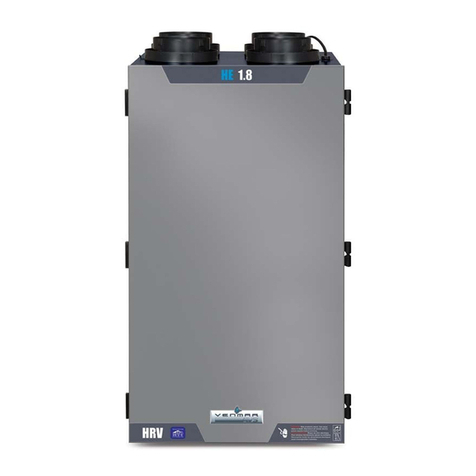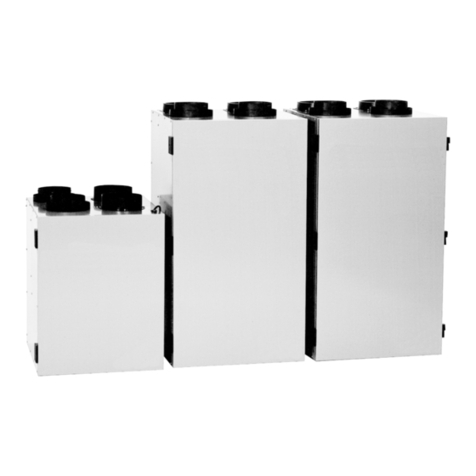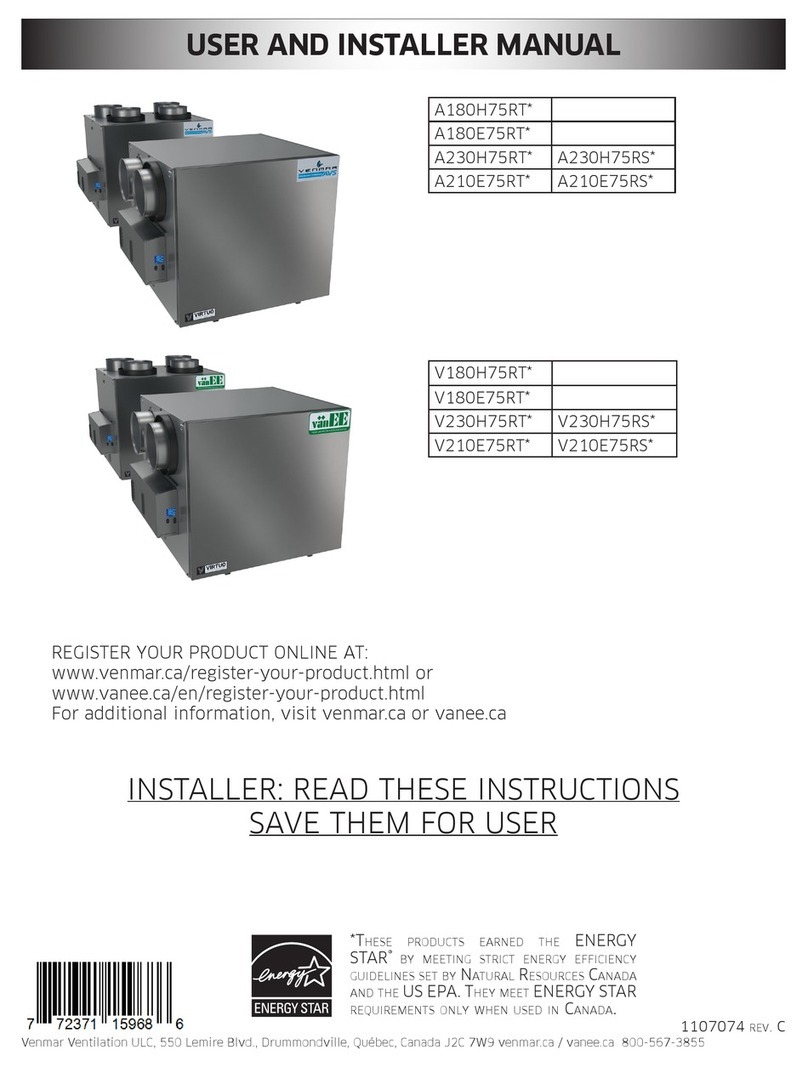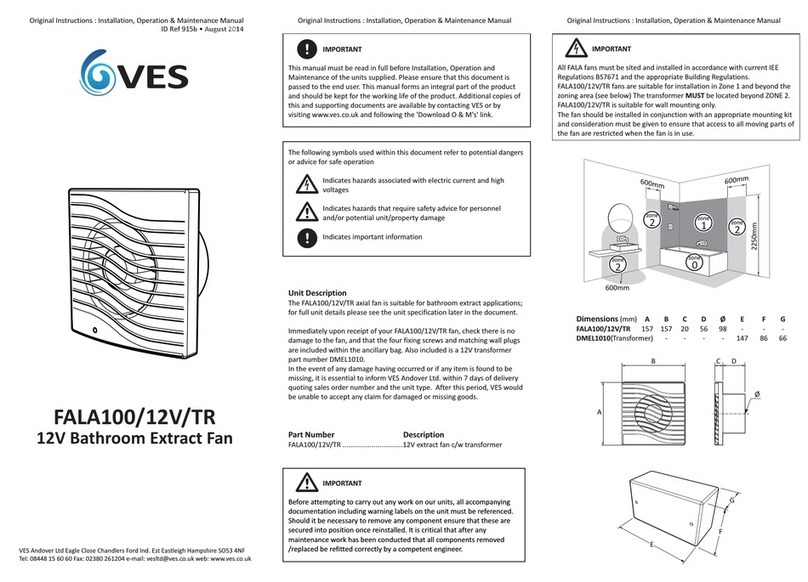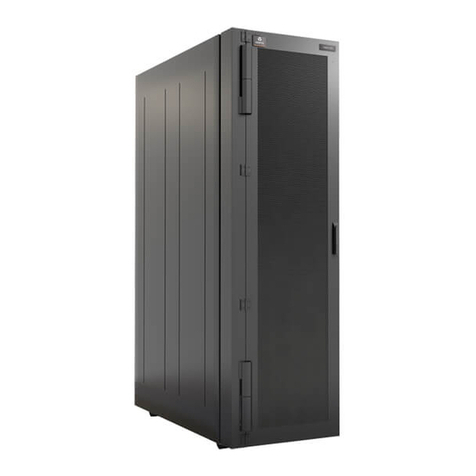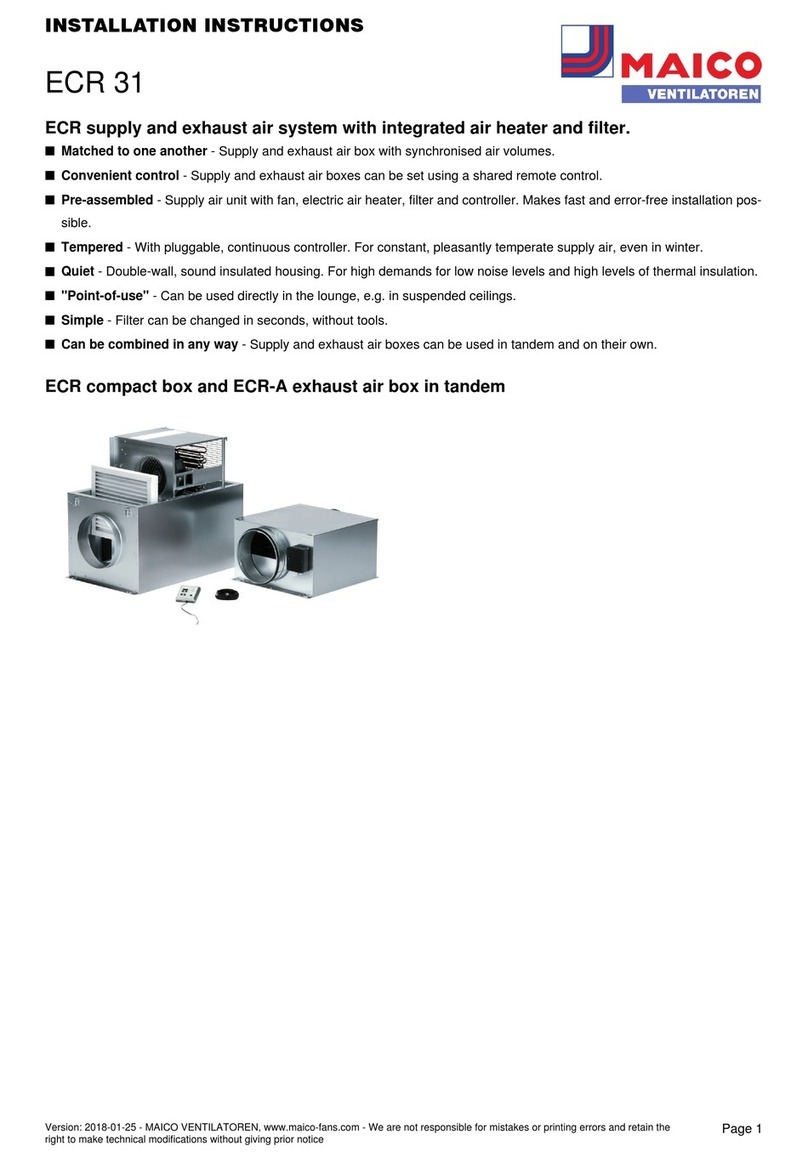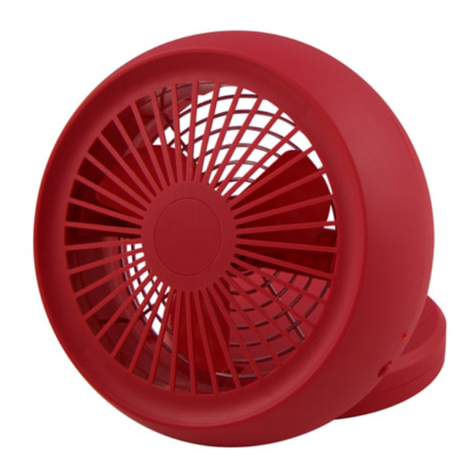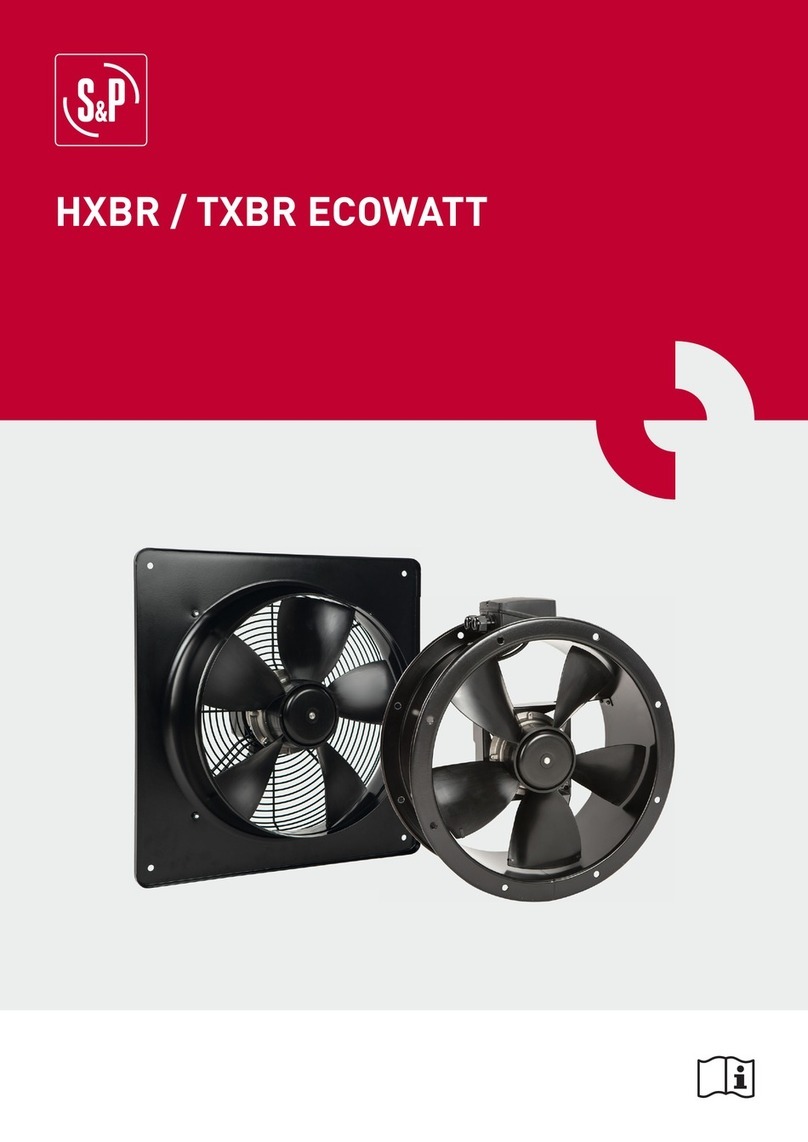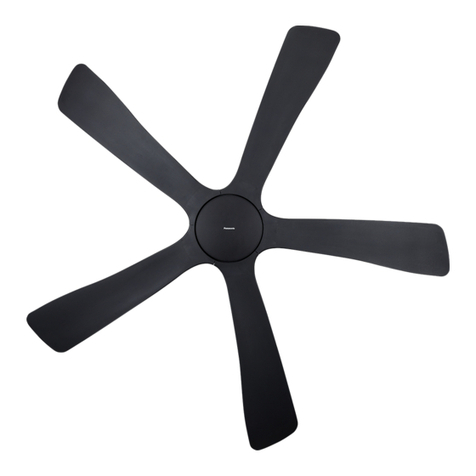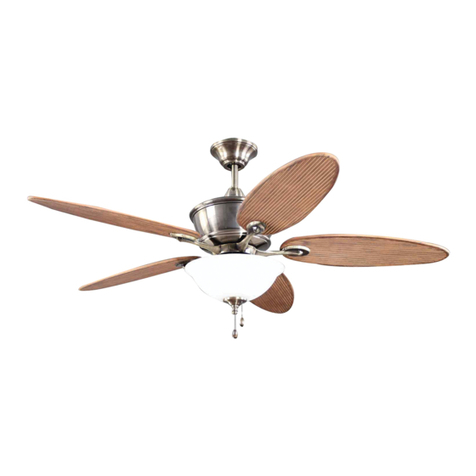
7
3.5 INSTALLING NON-INSULATED DUCTS AND DIFFUSERS (CONT’D)
3.5.1 FULLY DUCTED SYSTEM (AS ILLUSTRATED IN SECTION 1.1) (CONT’D)
HOW TO CONNECT THE FLEXIBLE DUCTS TO THE DIFFUSERS
Once the diffusers location is determined, cut out 5¼” diameter hole.
Run one end of the flexible duct through the hole and fix it to the diffuser base (1),
using a tie wrap and duct tape. Assemble the diffuser base to the wall (or ceiling)
using its 4 no. 8 x 3/4” screws. Then, slide in the diffuser (2).
See illustration at right.
Ø 5¼”
VJ0094A
2
1
3. INSTALLATION (CONT’D)
HOW TO CONNECT THE FLEXIBLE DUCTS TO THE UNIT PORTS
Both flexible ducts attached to the diffusers must be connected to the bottom ports of
the unit. When facing the unit door, the fresh air to building port is located on left side
and the exhaust air from building port is on the right side. Refer to the identification
labels affixed beside each unit ports. Using tie wrap, attach the fresh air to building
duct to its corresponding port, then do the same for the exhaust air to building duct
and port. See illustration at right.
NOTE: Use an insulated duct (not included) if the duct will have to go through a
space where it is possible to experience extreme temperature conditions
(eg: in northern area, unheated attic in winter or uncooled attic in southern
area).Also, if you plan to stop the unit for more than 12 hours, we recommend
to cover the duct with R12 insulation. VJ0097
RIGHT SIDE OF THE UNIT
Stale air exhaust ductwork
Same as for Fully Ducted System, described in step 3.5.1
3.5.2 CENTRAL DRAW POINT (AS ILLUSTRATED IN SECTION 1.2)
Fresh air distribution ductwork
When performing duct connections, always use approved tools and materials. Respect all corresponding
laws and safety regulations. Please refer to your local building code.
WARNING
!
• Locate the opening for fresh air ductwork on the forced air unit return duct
at a minimum linear distance of 9’ 10” (3 m) upstream (from forced air unit drop:
A+B+C). Cut out a 5” Ø hole in this location, using metal shear.
• Use a metal transition (not included, available in hardware store) to connect the
unit duct to the forced air unit return duct.
• Attach the other end of the flexible duct to the Fresh air to building port (see
icon on the left side of the unit).Use tie wrap and duct tape to seal the connection.
See illustration at right.
Fresh air distribution ductwork
• Install the fresh air distribution diffuser in a large, open area in the lowest level to ensure the greatest possible air circulation.
• Keep in mind that the fresh air diffuser must be located as far as possible from the stale air diffuser. If desired, you can install
another diffuser (sold separately).
• Install the diffuser either in the ceiling OR 6 to 12 inches (152 to 305 mm) from the ceiling on an interior wall. (The cooler air
will then cross the upper part of the room and mix with room air, before descending to occupant’s level.)
• If a register must be floor installed, direct the airflow up the wall.
UNIT PORTS IDENTIFICATION
Each unit port has an identification label
beside it to avoid wrong duct connections to
the unit. Always refer to these labels before
performing any duct and port connection.
VJ0095
UNIT
DOOR
VJ0099
A + B + C = NOT LESS
THAN 9’ 10” (3 M)
UNIT DOOR METAL
TRANSITION
